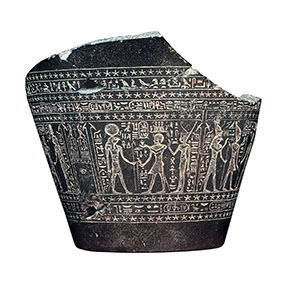Clepsydra
"Water clocks" of this kind were placed in temples to measure the passing of the night hours. The water flowed out of a hole in the base, normally equipped with a piece of metal to avoid any limescale that would make the flow irregular. The hour was read via a monthly hour scale, marked in parallel notches on the inside wall. The water had to take an hour to fill the space between two lines.
In-depth
The clepsydra was originally a container filled with water that had a hole at the bottom to let the liquid out. This allowed a calculation of passing time and served, for example, to regulate the length of night-time guard duties or time lawyers' speeches during trials. An initial refinement, prompted by the need to measure daily time without relying on a sundial, added a second container to catch the water from the first. Parallel grooves scored at equal distances in the bottom vessel acted as hour lines, making it possible to check that the water rose evenly from one level to the next. As studies progressed, water clocks became increasingly elaborate and eventually activated complex mechanical devices.




